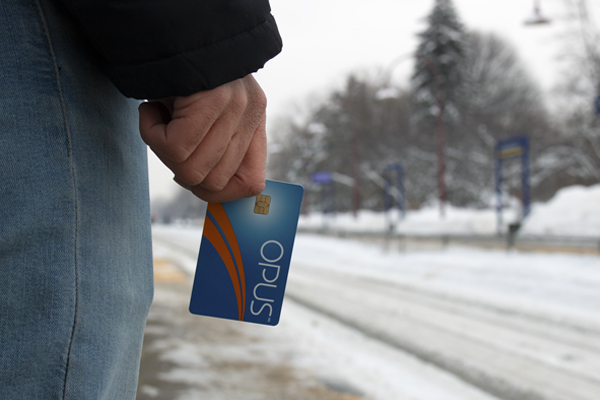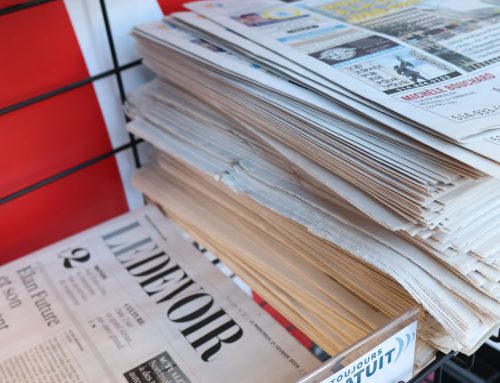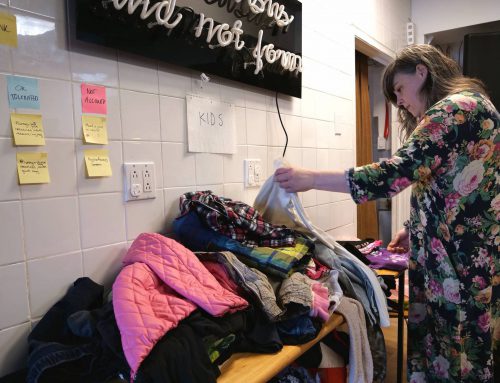BY Deborah Barrasso & Elias Grigoridis
Every morning, Riccardo Cogo commutes across the island to work. One might expect him to take public transit to save on gas. But since he’s headed to the West-Island, public transit presents its own challenges.
“[The commute] was anywhere between two-and-a-half to three hours which, when you have to be at work by 8 a.m. is relatively unfeasible,” says Riccardo Cogo, who works at Broccolini in Kirkland, but has to commute from St-Leonard. “The buses come every 15 to 20 minutes […] so if God forbid you miss it, you’re screwed.”
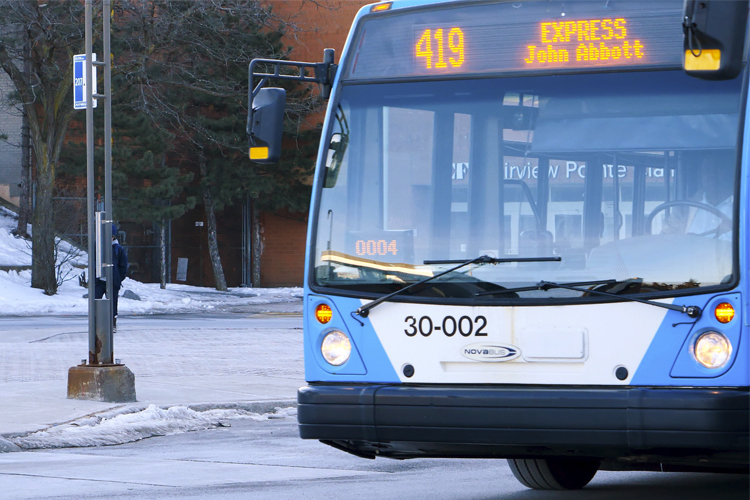
The 419 John Abbott Express bus waits for passengers to board at the Fairview terminal. Photo by Deborah Barrasso.
Roughly 2,300,000 people use Montreal public transit every day. But on the West Island, there are two only ways that public transit can get you to and from downtown: the train and the bus. Both have their pitfalls, which is the root cause of why use of public transit from the West Island is so low.
“To provide more bus service, there’s going to have to be more investment in the bus fleet,”says Harry Gow, councilman for the municipality of St.-Antoine-sur-Richelieu and former president of Transport Action Canada. “It’s a fact. These buses are in demand for all kinds of special purposes and the [centre] city has first dibs on it, let’s face it.”
For an area that has roughly a quarter of a million people, the West Island’s 4 express bus routes do not do enough to alleviate the stress on the train line.
While the area boasts nearly a quarter of a million people, there are only five express buses that lead to a metro station. Two of those only run during rush hour. It means that most West Islanders will have to take a bus which then takes them to the bus that gets them to a metro—meaning roughly an hour of commute before they even see a metro station.
The infrastructure is neither reliable nor accessible enough for commuters to give up their cars in favour of the STM.
“I feel like there would have to be a more efficient network of metros coming maybe a little bit more west,” says Cogo. “In the east end, you have relatively easy access to the metros, but they stop at De La Savane [metro station], so if one of those lines were extended out here maybe it would make it a little bit easier to commute via bus and then metro.”
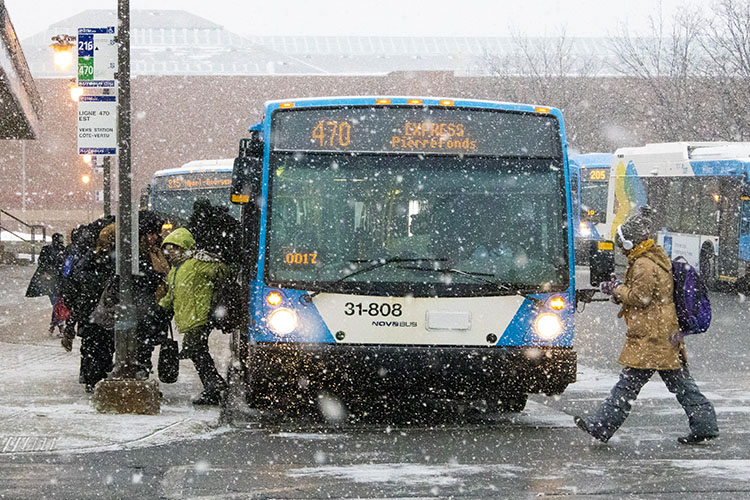
Commuters at the Fairview terminal in the West Island board the 470 Express Pierrefonds bus. Photo by Elias Grigoriadis.
With no access to metro stations—and no promising bus projects on the horizon—many West Islanders use another alternative: the commuter trains. Vaudreuil-Hudson and Deux Montagnes are the two train lines that operate in the West Island.
While they have had their issues with scheduling and frequency—especially on the Vaudreuil-Hudson line—the train system is a more or less reliable mode of transportation.
But that’s changing.
Enter the REM. The light-rail system that promises a faster commute for many once it is finished in 2023. But while it is under construction, it’s creating a new problem for commuters.
The new light rail system being built, the Reseau Express Metropolitain (REM), promises to facilitate commuting on and off the island of Montreal, including in the West Island. Still, there may be some issues that stop the REM from fulfilling that promise. Video by Deborah Barrasso.
This western REM line will run alongside the Deux-Montagnes train line—meaning that the train line has been shut down until construction is finished. And that is forcing some away from public transit and into their cars.
“I hate to say it, but it’s probably a private car,” says Gow. “When public transit is lacking or becomes too difficult to use, people will just take a shortcut and figure out where they can park their car near a metro or train station.”
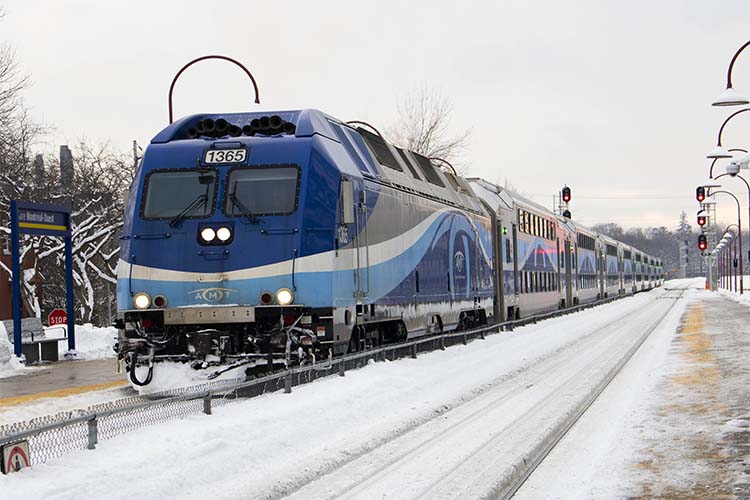
A train on the Vaudreuil-Hudson line approaches the platform at the Montreal West station. Photo by Deborah Barrasso.
However, not everyone can afford a car. So if Gow’s prediction is accurate, the closure could end up disproportionately affecting those with the fewest resources.
That may be a harsh reality for people who solely depend on public transit. Be it due to environmental or economic reasons, a private car may not always be available, and ride-share services are infinitely more expensive. This all culminates into a perfect storm of there not being enough bus routes or physical buses, coupled with the fact that the West Island’s train options are narrowed down to one line.
“To take an hour more, I don’t see the convenience,” says Vito Sacchetti, a financial analyst and Pierrefonds resident. “It’s a one-kilometer walk, and then an hour bus ride to [Côte-Vertu]. As much as people say it’s not so bad. Well, it could be better. Going downtown isn’t always convenient.”
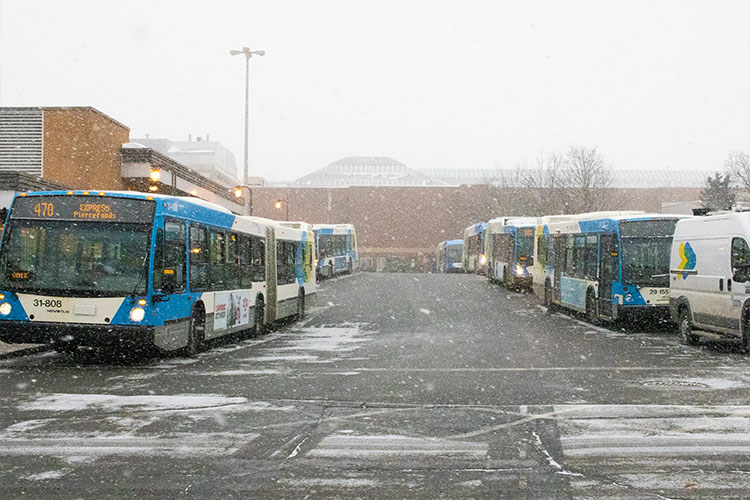
Busses gather at the Fairview terminal in the West Island during the morning rush hour. Photo by Elias Grigoriadis.
With still at least a year and a half before the West Island is served by the REM, it remains to be seen how the light-rail system will affect the commute. Above that, what will the STM and those in charge of the Vaudreuil-Hudson line find in terms of ways to invest more money, buses, and trains into their effort to get people out of their cars and into public transit? That hasn’t done much to quell the cynicism of Kirkland resident Patrick Dunlop.
Here’s how he describes his commute: “In a word: Hell.”
